You have the perfect idea for your business. The business plan is solid, the branding is brilliant, and you’ve found the ideal domain name. There is just one problem. Someone already owns it, and they want a lot of money for it. This situation is more common than you think, but it does not mean you have to give up on your perfect name or empty your bank account.
With the right approach, you can negotiate a much better price. This guide will give you the domain name negotiation tactics you need to secure your ideal web address without overpaying. We will walk you through preparation, communication, and closing the deal like a pro.
The Foundation of a Good Negotiation
Before you even think about contacting the domain owner, you need to do your homework. A successful negotiation is won or lost in the preparation phase. Rushing into a conversation unprepared is a recipe for paying too much.
Figure Out the Domain’s True Worth
A domain’s price is subjective. The owner might have an emotional attachment or an inflated sense of its value. Your job is to determine its objective market value. Use online tools like GoDaddy’s Domain Appraisal or EstiBot to get a baseline valuation. These tools analyze factors like keyword strength, length, and recent sales of similar domains.
Remember, these are just estimates. The real value also depends on how much it’s worth specifically to your business. Is it a perfect brand match, or just a good keyword? Be honest with yourself about its importance.
Research the Current Owner
Who are you negotiating with? Knowing the seller gives you a significant advantage. Use a Whois lookup tool to find the owner’s contact information. Sometimes this information is private, but often you can find a name, organization, or email.
Once you have a name, do a little digging. Are they a professional domain investor, also known as a domainer, who buys and sells names for a living? Or are they a fellow business owner who is no longer using the domain? A professional domainer will be less emotional and more business focused. An individual might be more flexible if their project never took off. This knowledge helps you tailor your approach. For example, a corporation that owns a domain as part of its branding portfolio will be much harder to negotiate with than an individual who forgot they even owned it.
Set Your Walk Away Price
This is the most important step. Before any contact, you must decide the absolute maximum amount you are willing to pay for the domain. This is your walk away price. Write it down. This number prevents you from making an emotional decision in the heat of the moment. Having a firm limit keeps the power in your hands and ensures you stick to your budget.
Making Contact and Starting the Conversation
Your first interaction sets the tone for the entire negotiation. You want to appear professional, serious, and reasonable.
Crafting the Perfect First Email
Your initial outreach should be polite and direct. Do not reveal your excitement or how desperately you want the domain. This is a business transaction.
Here is what your email should include:
- A simple, clear subject line like “Inquiry about [DomainName.com]”.
- A brief introduction explaining that you are interested in acquiring the domain.
- A direct question asking if they are open to selling.
Avoid mentioning what you plan to do with the site. You can use a generic email address instead of your main business email to remain anonymous. This prevents the seller from researching your company and seeing how much you might be able to afford. The goal is to start a conversation, not to show all your cards.
Making the First Offer
Many experts debate whether you should make the first offer. If you do, it should be a low but reasonable offer based on your research. Offering an absurdly low number might offend the seller and shut down the negotiation. A good starting point is often around 20 to 30 percent of your estimated value.
Alternatively, you can ask the seller for their price first. You can say something like, “I’m interested in the domain. Do you have a price in mind?” This puts the ball in their court. Their initial asking price is usually a high anchor point. Do not be discouraged by a big number. It is just the start of the negotiation. A famous example is the purchase of Face.com by Facebook. While the final price was in the millions, the initial negotiation started with a simple inquiry to gauge the seller’s interest.
The Art of the Deal: Negotiation Tactics
Once the conversation is flowing, it is time to work toward a price that benefits you. Patience is your greatest asset here.
Justify Your Offers
Never just throw numbers back and forth. Every offer or counteroffer should come with a reason. For instance, you could reference sales of similar, less valuable domains or mention that the domain lacks traffic and backlinks. This shows you are a knowledgeable buyer, not just someone guessing numbers.
For example, you could say, “I can offer $1,500. This is based on recent sales of other three word .com domains and the fact that the name has no existing website or search ranking.” This frames your offer as logical and fair.
The Power of Silence
After you make an offer, wait. Do not rush to follow up or sweeten the deal if the seller does not respond immediately. Silence can make the other party anxious. They might think you are losing interest and become more willing to accept your offer or provide a better counteroffer. Rushing shows desperation, which will always cost you money.
Use a Secure Third Party Service
Once you agree on a price, you need a safe way to complete the transaction. Never send money directly to the seller. Use a reputable escrow service like Escrow.com or a marketplace like Afternic.
An escrow service acts as a neutral third party. You send the payment to the escrow service. They hold the money until the seller transfers the domain name to you. Once you confirm you have control of the domain, the service releases the funds to the seller. This protects both you and the seller from fraud. The small fee for this service is well worth the peace of mind.
Finalizing Your Domain Purchase
Congratulations! You have successfully negotiated a great price for your domain. Your final step is to ensure a smooth transfer. The escrow service will guide you through the technical process, which usually involves the seller providing an authorization code to unlock the domain for transfer to your preferred registrar, like GoDaddy or Namecheap.
By preparing thoroughly, communicating strategically, and negotiating patiently, you can acquire the perfect domain name at a price that makes sense for your small business. These tactics give you the control to build your brand on the foundation of a great name without breaking the bank.
We Want To Talk To You About Your Marketing Goals.
Let’s Supercharge Your Online Growth!












